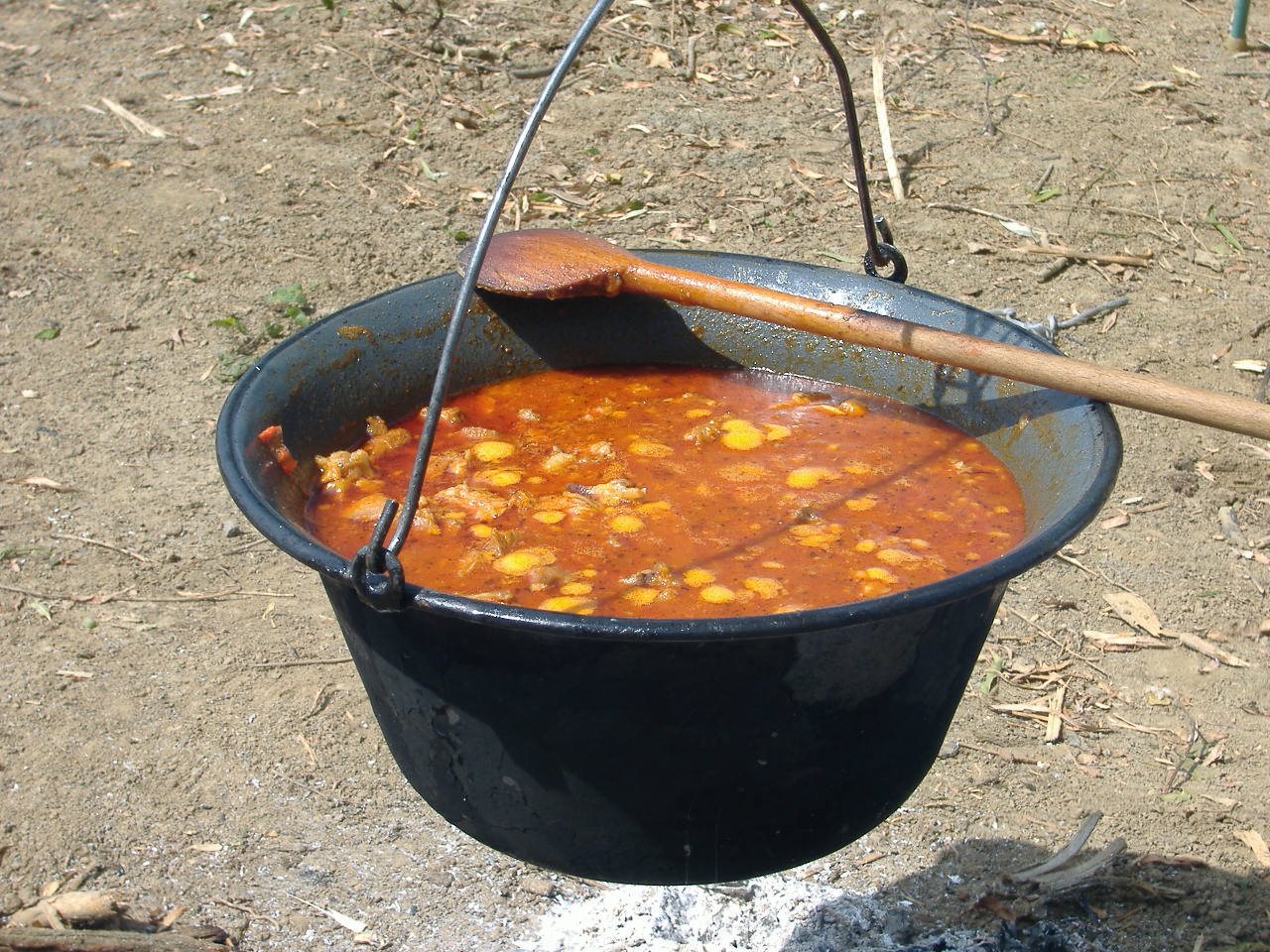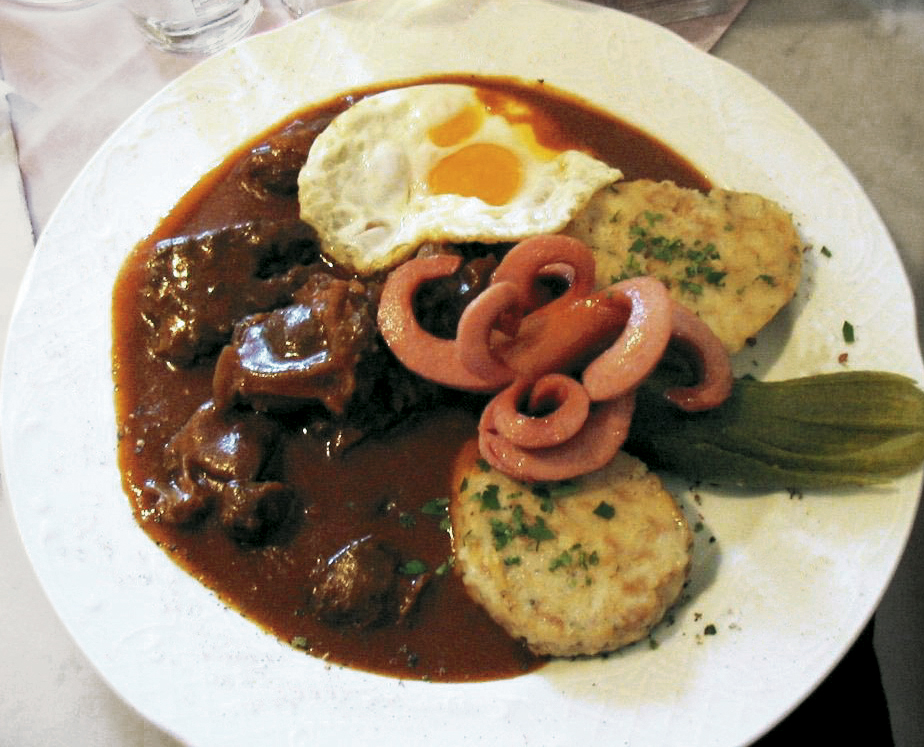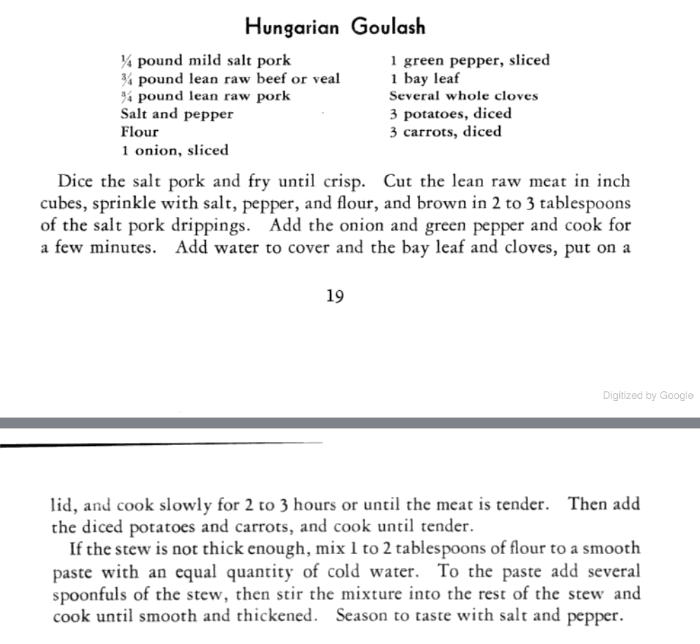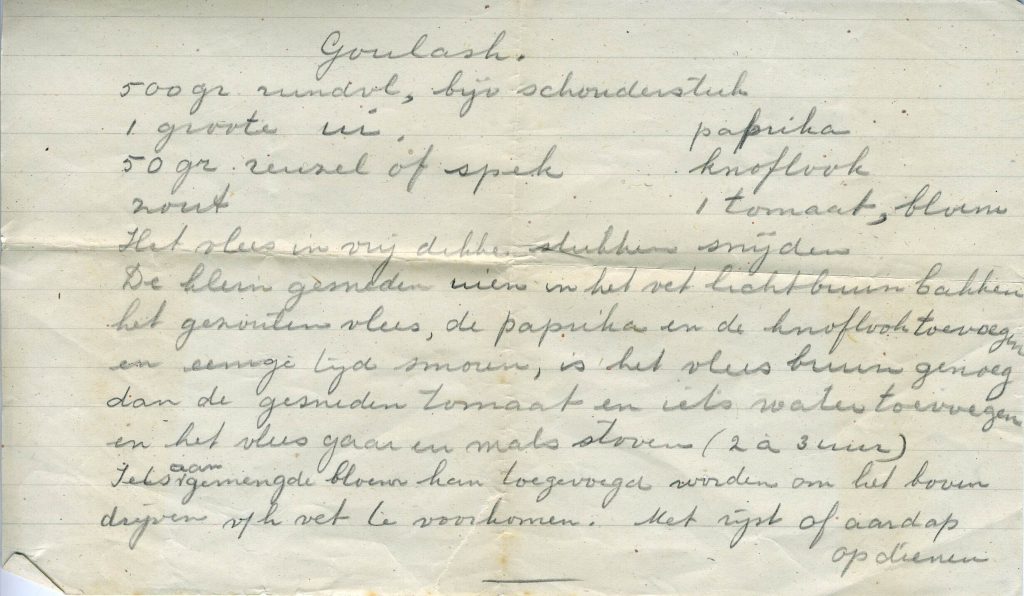
Goulash cooking in a bogrács (traditional Hungarian cauldron), CC BY-SA 3.0
There is always something special about the history of a certain dish, a unique blend of flavors, savors, and tastes. When you try Hungarian goulash, its enticing flavor and smell lead back to a bygone era when the vast Hungarian Puszta echoed with the calls of nomadic herders and shepherds. It was during these times, around the 9th century, that goulash emerged as a humble yet healthful dish, marking the inception of a culinary legacy that would endure for centuries.
The word “gulyás” itself, the Hungarian term from which goulash is derived, originally referred to the herdsmen who tended to cattle on the expansive plains. These herders, living a life intertwined with the rhythms of nature, sought strength in a dish that would fortify them for their arduous journeys. Thus, the earliest version of goulash came into being—a simple stew crafted from accessible ingredients: beef, onions, and the soon-to-be quintessential spice, paprika.
The use of paprika in goulash is a transformative addition that elevates the dish from a basic stew to a flavorful symphony. Introduced to Hungary by the Turks in the 16th century, paprika became an integral part of Hungarian cuisine, marking a culinary revolution. The earthy, slightly sweet, and mildly spicy notes of paprika would become the defining characteristic of goulash, distinguishing it as a distinctly Hungarian creation.
As goulash took shape, it served as more than just sustenance for the herdsmen. Its preparation became an art form, reflecting the resourcefulness of those who crafted it and the harsh conditions they faced. Slow-cooked in cauldrons over open fires, the dish mirrored the rugged yet vibrant spirit of the Hungarian Puszta.
The period when goulash was first prepared saw a convergence of influences. The cultural tapestry of Hungary, woven with contributions from various civilizations, began to incorporate the flavors of the East and the techniques of the West. The result was a culinary creation that captured the essence of the land and its people.
From Shepherd’s Meal to Aristocrat Dish
Goulash‘s early preparation marked a departure from the monotonous and repetitive diets of the time. The addition of paprika not only enhanced the flavor but also hinted at the spice trade routes that crisscrossed the region, connecting Hungary to distant lands. The use of beef, a choice of meat for long, slow cooking, showcased the practicality and resourcefulness of the Hungarian herders, who maximized the potential of available ingredients.
During this formative period, goulash was a dish born out of necessity, a testament to the ingenuity of a people navigating the challenges of their environment. Little did they know that their humble stew would evolve into a culinary icon, symbolizing the spirit and resilience of a nation.
The flavors that permeated the cauldrons of those early goulash preparations would become the foundation of Hungarian gastronomy. As Hungary progressed through the centuries, goulash evolved from a practical shepherd’s meal to a dish fit for kings and aristocrats. Its journey from the Puszta to the royal tables of Europe mirrored the changing fortunes of Hungary, solidifying goulash as not just a culinary delight but a cultural touchstone.
As Hungary evolved politically and culturally, so too did its culinary landscape, and goulash underwent transformations that mirrored the changes in Hungarian society.
During the 18th century, goulash began to transition from a humble peasant dish to a celebrated part of aristocratic feasts. The addition of new ingredients such as tomatoes and green peppers enriched the flavors, and variations emerged to cater to different tastes and social classes.
The culinary status of goulash reached new heights in the 19th century. The dish gained international recognition and found its way onto the tables of European aristocracy. Its versatility and adaptability made it a favorite among both the elite and the common folk.
Goulash as a Symbol of National Identity
Goulash has played a pivotal role in shaping Hungary’s national identity, serving as more than just a nourishing meal. In the 19th and early 20th centuries, as Hungary sought to define itself as a nation, goulash became a symbol of Hungarian pride and resilience.
The famous Hungarian poet and nationalist, Sándor Petőfi, even wrote a poem in 1846 titled “Gulyás” that celebrated the dish. The poem’s vivid descriptions and romanticized imagery contributed to goulash’s cultural significance, firmly associating it with the spirit of the Hungarian people.
As Hungary struggled for independence and cultural autonomy, goulash became a rallying point. Its popularity as a symbol of national pride grew, and it was featured in folk songs, literature, and artwork, cementing its place in the hearts of the Hungarian people.
Goulash in the Modern Era: A Global Culinary Ambassador
The 20th century witnessed goulash making its mark on the international culinary scene. Hungarian immigrants brought the recipe with them as they settled in different parts of the world, sharing the warmth and flavors of their homeland.
In the United States, goulash became a popular comfort food, particularly in the Midwest, where Hungarian communities flourished. However, it’s worth noting that the American version of goulash often differs from the traditional Hungarian dish. In the U.S., it is commonly a one-pot meal featuring ground meat, tomatoes, and macaroni.
The global popularity of goulash reached new heights after World War II, with many restaurants across Europe and beyond featuring it on their menus. The dish’s adaptability made it a favorite among chefs and home cooks alike, allowing for creative interpretations while preserving its core elements.
Ingredients and Preparation: Crafting the Perfect Goulash
At its essence, goulash is a stew that captures the robust flavors of Hungary’s culinary heritage. While there are various regional and personal variations, a classic Hungarian goulash typically includes the following ingredients:
Beef: Traditionally, tougher cuts like chuck or shin are favored, as they benefit from slow cooking, becoming tender and flavorful.
Onions: A generous amount of onions provides a sweet and savory base for the stew.
Paprika: The soul of goulash, paprika imparts a distinct red hue and a rich, earthy flavor. Hungarian paprika is classified into various types, including sweet, hot, and smoked, each contributing unique characteristics to the dish.
Tomatoes: While not a part of the earliest versions of goulash, tomatoes have become a common addition, enhancing the stew’s depth and sweetness.
Bell Peppers: Green or red bell peppers contribute color, sweetness, and a subtle hint of bitterness to the dish.
Garlic: Aromatic garlic complements the other ingredients, adding complexity to the flavor profile.
Carrots and Potatoes: These root vegetables provide additional texture and substance to the stew.
Caraway Seeds: Caraway seeds, with their warm and slightly peppery taste, are often used to season goulash.
The preparation of the dish involves slow-cooking the meat with the vegetables and spices until the flavors meld together, resulting in a hearty, flavorful stew. Traditionally, goulash is cooked in a cauldron over an open fire, evoking the spirit of the Hungarian shepherds on the Puszta.
Variations and Regional Specialties
While the classic Hungarian goulash remains a cherished staple, various regions within Hungary and beyond have put their spin on the dish, creating unique and flavorful variations. Some notable examples include:
Pörkölt: Often considered a close relative to goulash, pörkölt is a stew with similar ingredients but typically less liquid. It is characterized by a thicker, more concentrated sauce.
Halászlé (Fisherman’s Soup): A spicy fish soup popular in Hungary, halászlé features paprika, fish, and other ingredients, offering a distinct seafood twist to the traditional goulash.

Lecso: This Hungarian pepper stew includes tomatoes, paprika, peppers, and onions, sometimes featuring sausage or eggs. While not goulash per se, it shares similarities and is a beloved dish in Hungarian cuisine.
Bográcsgulyás: Cooked in a bogrács, a traditional Hungarian cauldron, this variation is often prepared during outdoor events and festivals, adding a communal and festive aspect to the meal.
Székelygulyás: Named after the Hungarian writer Sándor Székely, this variation includes sauerkraut, pork, and sour cream, resulting in a tangy and savory flavor profile.
With its rich, hearty flavors and comforting aroma, goulash stands as a testament to Hungary’s culinary prowess and enduring cultural heritage. This iconic dish, with its roots deeply embedded in the heart of Central Europe, has traversed centuries, shaping not only the nation’s gastronomy but also its identity.



please could you translate the dutch handwritten goulash recipe dated c1942-1945?
all my family on my mother´s side came from Hungary.
I live in Buenos Aires, Argentina.
my goulash started just as a treat for friends, now I have so many requests that I´m thinking of
branching out and make a profit of it.
your article, Ivana, is a treasure.
love,
Carlotta
Hello Carlotta, thanks for your comment. Unfortunately, I don’t speak Dutch, so I used AI to translate it into English. Maybe this could help:
Goulash
500 gr beef, preferably shoulder cut
1 large onion
50 gr lard or bacon
paprika
garlic
salt
1 tomato, peeled
Instructions:
Cut the beef into fairly thick cubes.
Lightly brown the finely chopped onion in the fat.
Add the seasoned meat, paprika, and garlic, and braise for a good amount of time.
Once the meat is browned, add the chopped tomato and a little water.
Let the meat simmer until tender (2 to 3 hours).
A little flour can be added to prevent the fat from floating to the top.
Serve with rice or potatoes.